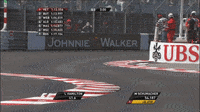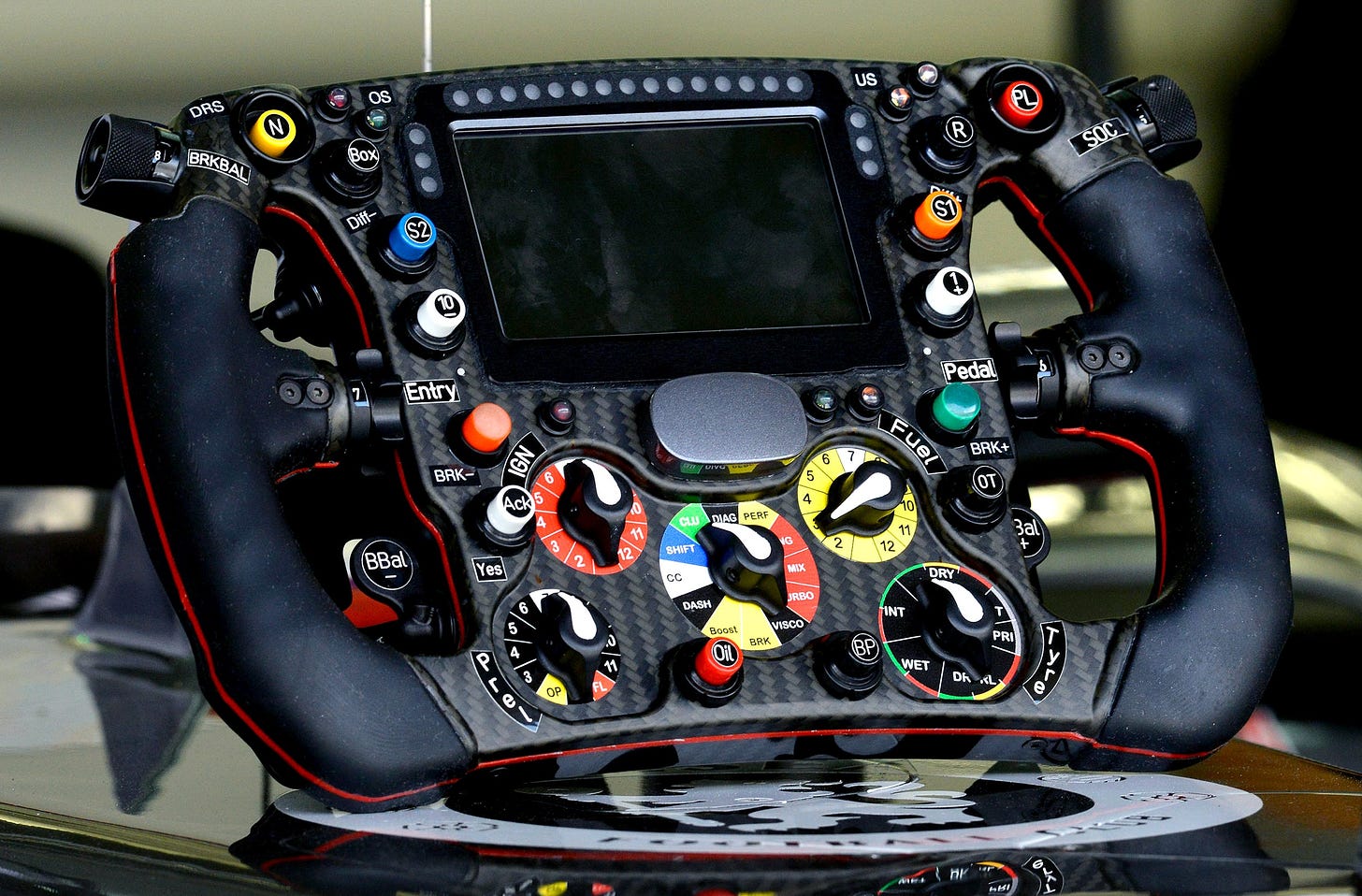
Formula One is one of my favourite sports. Things could turn one way or the other in hundredths of a second. For example, in the Azerbaijan Grand Prix in 2021, the race leader, Max Verstappen, had a crash 3 laps before the race was about to end. Within a split second, he went from position one to out of the race.
Sometimes, Formula One gets a bad reputation – that it is a rich man’s sport. While a part of it is actually true, I think this image tends to belie the decades of technological progress we’ve made in automotive technology, which has made the world a safer place to live in.
Through this post, I’ll talk a little bit about Formula One.
What exactly is Formula One?
In a nutshell, Formula One is a car racing championship, where 10 teams compete every year for the World Championship. Cars drive fast, like this:

Each race lasts about 2 hours of total time, preceded by many many hours of preparation and years of training. In short, it is like any other worldwide sport – you train for years and prepare for matches lasting a few hours.
The “Formula” in Formula 1 stands for a series of rules that all participants have to adhere to. These rules are decided by a governing body called FIA, which creates rules not just for F1, but also for Formula 2 and many other racing championships.
The first F1 championship was held in 1950, and was originally dominated in Europe. The FIA in the recent decades has made a concerted effort to take the sport global, and now races are held across the world.
Alright, so what’s different?
Let’s look at some facts —
- Today, the cars can have a top speed of about 325 kmph.
- Cars can go from 0-150kmph and back in less than 4 seconds.
- Drivers can lose up to 6kgs in a single race! Wait, what?
- Team yearly budgets run upwards of $100 million, with several teams spending more than $400 million dollars every year.
- Depending on the tyres used, a car can’t go for more than 30-40 laps (1 lap = around 5 to 6 km, depending on the track). Cars often have to take a pit stop to change their tyres.
- Micro-seconds count. A driver can take 1/1000th of a second more than another driver, and thus be judged to be behind the other driver.
And what about the drivers?
Well, they are incredible athletes to say the least. Unlike driving a normal car, here’s some things they experience:
- While turning and braking, the G-force they experience can be 4 to 5G. This is basically 4 to 5 times the regular gravitational force of the earth. This is similar to the G-force experienced by flight pilots who do rapid somersaults. These G-forces can make you faint if you’re not trained to handle them. F1 drivers have to specifically train to ensure they can handle such stress on their bodies.
- A single lap could have 19-20 turns, which means that every second, you might be turning your car in a different direction, while decreasing your speed from 300 kmph to 100 kmph, while also looking around to make sure no one is overtaking you, and also trying to communicate with your team about your car’s status. Well, talk about peak performance…

3. The drivers also have to juggle a lot of moving parts in their cars. Take a look at the steering wheel itself. There are so many buttons and knobs on it that you have to click on within seconds that mistakes are easy to make, unless you are hyper-focused.

- Not to mention the biggest risk these drivers face – that of losing their lives. A single wrong push of the pedal or cranking of the steering wheel could crash your car. Over the years, several people have died driving an F1 car.
😱That seems like a lot of risk.
It is. In the second last race of the 2020 season, Romain Grosjean’s car pierced through the barricades and went beyond the racing track limits, before bursting into flames. While several people had started to lose hope, like a phoenix, Romain walked out of the burning fire and towards an ambulance waiting for him.
Thanks in part to the decades of innovation in safety – the fire suits, the design of F1 cars that minimizes impact on the driver, the design of the circuits to ensure that other drivers are safe, the hundreds of safety protocols, and of course, sheer luck!

Check out this video to see the miraculous escape.
But the game goes on, just like life! Over the decades, FIA has heavily invested in making the sport a lot more safer. A recent example is the halo design on top of the cockpit, which prevents drivers from damaging themselves. It is suggested that the halo played a major role in saving Romain Grosjean’s life as well.
Why is F1 called a team sport?
Just like every car has tens of thousands of moving parts, a driver cannot win without the adequate support of his team.
During a race, there is a lot more going on behind the scenes while the driver is trying to win. For example – there are people monitoring data about how the car is behaving, some who are observing the competitors and optimizing their strategy, and so on.
Drivers also often have to pit during a race. Nowadays, pit stops last 2 seconds and are a key part of racing strategy for any team. Take longer than that, you lose your spot. Avoid a pit stop, and you might gain a few spots. Of course, this is easier said than done. There are several variables at play here.

Let’s take an example of how things could fail. In the 2021 Monaco Grand Prix, Valteri Bottas was driving in the second place when his team decided to change the car’s tyres. He drove into the pit lane.
But guess what happened?
One of the guns that unscrews the tyre from the axle got jammed! As a result, the existing tyre could not be removed from the car, as Bottas helplessly watched towards his pit crew trying to remove the tyre.
In the end — Bottas had to end his race. Quite a bad result for someone who was in the second spot and had a real chance of winning the race!
Technological innovation aided by sport
You might have guessed by now that the sport requires a lot of technological innovation by the teams in order to win races. This, in fact, improves our cars on the road.
Let’s take a few examples —
- KERS (Kinetic Energy Recovery System) — introduced in the late 2010s, this system allowed the energy generated from braking to be stored and reused to give the cars an additional push when they had to overtake. Today, this same system is used in a lot of hybrid cars and buses, which helps make our cities greener.
- Data transmission and monitoring — Public transportation has also seen benefits of innovation coming from Formula One. Singapore’s Mass Rapid Transit system now uses sensors and data tools that once were introduced in Formula One.
- Innovation in materials — The innovations in aerodynamics and materials engineering have found their way to other sports like cycling and sailing, where aerodynamics play a huge part in improving performance.
In conclusion…
Humans are motivated by games and competition. By adding technology as a key requirement for playing these games, F1 has helped us make some serious technological prowess.
A lot has happened and a lot is yet to be seen, but as I write this essay, my love for the sport has only grown!
I am once again (unrealistically) dreaming of the day I get to drive an F-1 car…😉

Want to learn more about F1?
- A newbie’s guide to Formula One – A good article that will help you know all you need to if you want to start following the sport.
- Formula 1 – Drive to Survive: An excellent docuseries by Netflix covering the behind-the-scenes of Formula One.
- Formula 1 official site: Look through the history of Formula One, its technology, and everything else.
I write every week about how technology is influencing our lives. Come, learn with me at Magnifier (substack.com)!